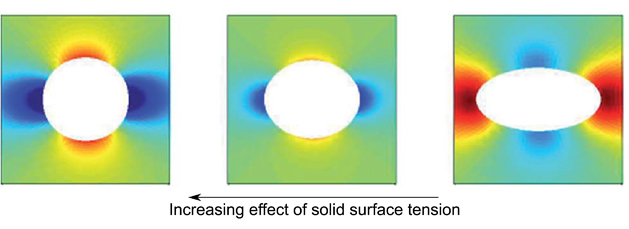Surface tension and the mechanics of liquid inclusions in compliant solids
Robert W. Style, John S. Wettlaufer, and Eric R. Dufresne

This article proposes a theory of fluid inclusions in soft solids and builds upon experimental findings of a previous paper recently published in Nature Physics – “Stiffening solids with liquid inclusions” doi:10.1038/nphys3181 – which revealed that Eshelby’s foundational theory fails to describe the mechanical response of soft composites. Eshelby’s theory of elastic inclusions is significantly cited and outlines the response of microscopic inclusions within an elastic solid when macroscopically stress is applied. Furthermore, Eshelby’s theory allows the prediction of bulk properties and is fundamental in calculating the stress field in fracture mechanics. It has been widely used in many other areas such as cell biology to predict cell interactions and seismology.
The theoretical study aims to rationalise the experimental results from the previous paper and explain that they were due to the surface tension of the solid-liquid interface, which is completely ignored in established theory.
The work expands previous theories based on strain-dependent surface stresses, relevant to nanoinclusions in stiffer materials, but not for softer materials such as gels.
The group adapted Eshelby’s inclusion theory so that it included surface tension for liquid inclusions in a linear elastic solid, giving both the microscopic behaviour and the macroscopic effects of inclusions in composites. The authors believe that these findings can be applied to a wide variety of soft material systems, especially composites comprising of soft materials such as gels and elastomers.
Full citation information:
Surface tension and the mechanics of liquid inclusions in compliant solids
Robert W. Style, John S. Wettlaufer and Eric R. Dufresne
Soft Matter, 2015, Advance Article
DOI: 10.1039/C4SM02413C










